By
Justin Hoffman
Hunting trophy largemouth can be one heck of an addictive sport. The pursuit demands patience, stamina, and the utmost in determination. And although wading through two and three-pounders is fun unto itself - it is sliding your net under that rare giant of a fish that truly makes this obsession worthwhile.
There is no better season than that of fall to tangle with plump largemouth bass. Not only are the fish well fed and spunky, but also the chance for connecting with a five-pound plus beauty weighs heavily in your favour at this time of year.

A Time of Change
As summer transitions into fall, a series of changes begin to take place. Bright crimson hues take hold of flag-waving leaves, while lake water begins to slowly dip in temperature. The pesky biting bugs have all but disappeared, as have the fair-weathered weekend warriors.
But a change is also occurring within the resident largemouth. Sensing the impending arrival of the winter food drought and dormant stage, bass are beginning to feed heavily, bingeing on prey and rapidly building up fat reserves. They are also migrating from summer-friendly locations to those that more meet their needs. They become overly predictable, and as long as you know where to look and what to throw, the fishing can be relatively easy.
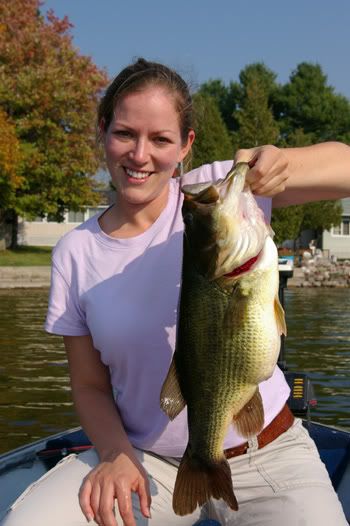
Location is Key
If I could have one common ingredient when chasing fall largemouth, it would definitely be the presence of rock.
Rock you say? But that’s smallmouth bass territory!
Yes, smallmouth bass do take up residence on the hard stuff all season long, but come fall time, largemouth make like their cousin and hit this structure base as well. The reason behind this is two-fold. Crayfish are an integral part of the largemouth diet, and this isn’t truer than when summer bids farewell. And what better place to find these high caloric snacks than in the place they call home.
The other important factor is heat. Acting like a magnet in attracting and holding the skyward sun, rocks provide a thermal layer of warmer water that largemouth bass instinctively gravitate to. Think of it as us heating our hands over an open fire.
Rock comes in all shapes and sizes, but over the years I’ve found a few variables that are worth keying in on. Slab rock is one. These large stone “tables†will often find fish holding on top, or just off the edge where it meets deeper water. It is often possible to sight-fish for these bass when water is clear and the sun is high. Just look for the dark shapes over the lighter bottom.
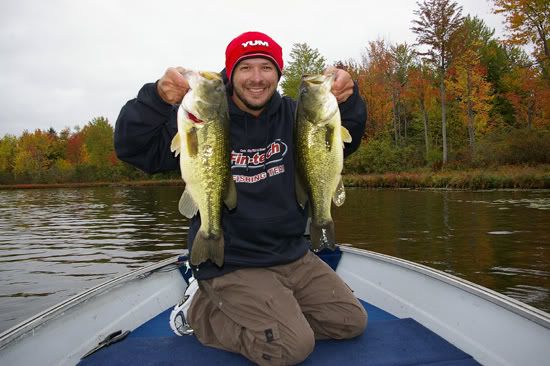
Another prime bit of real estate is what I commonly refer to as a “mucky mixture.†Simply put, this is a collection of boulders, pebbles, slab, and chunk. It is variety such as this that will attract a larger percentage of fish than most run-of-the-mill spots.
Wood, in conjunction with rock, is also a prime target when seeking out fall largemouth bass. Although large laydowns will frequently hold fish, I’ve found that the mere presence of a stick or branch is enough to attract and hold a fish on a spot. Most times largemouth bass will be either lying beside the structure or hovering on top. These sticks offer no real cover or safety, but there is something comforting or attractive that certainly draws fish in – especially in the fall.
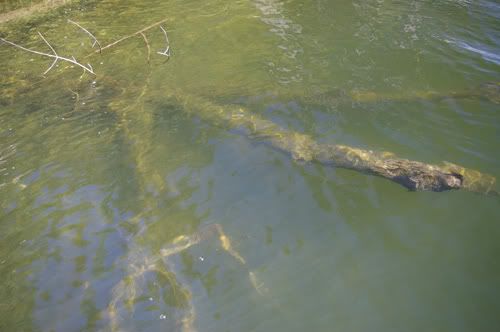
Docks that are situated over deep rock are another favourite structure area come fall, and often harbour big fish within their secretive lair. The same goes for wood and rock cribs. These man-made creations offer everything a largemouth bass could ask for – food, cover, security, and access to deeper water. Although most docks or cribs that are situated on rock get a cast or two, it is those that are in water between eight and 15-feet that really get a good going over.
The last variable I seek out is vegetation. A smattering of the green stuff, mixed in with rock or wood, is conducive for finding largemouth. I do find that less is better, and will purposely stay away from thick weed beds or congested flats.
Where To Start
Not all lakes are capable of holding solid numbers of largemouth bass on rock. Deep-water lakes make prime candidates, whereas shallow, fertile lakes are generally a poor choice. Think “Canadian Shield†style water, although they don’t necessarily need to reside way north to yield the results you’re looking for.

Many of my top lakes average 60 to 100-feet deep, are filled with clear water, comprised of sharp breaklines, points and shoals, and are almost entirely made up of rock and rubble. It is this style of lake that will consistently cough up above-average fish during the fall months, and are the only type I hit when heading trophy hunting.
So where should you look first? My advice is to start with shorelines that drop into deeper water fairly quickly. The kind that has the boat twenty-feet from shore and the sonar reading 30-feet deep. It is then a matter of working your way around a lake, seeking out areas that were discussed previous, and pounding them into submission.
There is no perfect depth for finding largemouth in the fall, but if I could narrow it down, I would put my most effort into water that fell between three and 15-feet deep. The cover or structure that is present will dictate exactly where they fall on that scale. Yes it is a big variable, but it is a good starting point. Working your boat parallel from the shore is often the most efficient way to target a variety of different depths.
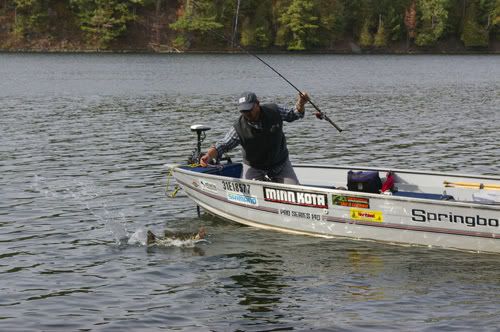
If I’ve learnt one thing over the years from fishing in the fall, it would be to not disregard shallow water. My personal best largemouth bass - a trophy fish weighing six-pounds even - was caught from five-feet of water on a rock-slab shoal on September 20, 2005. I have also caught numerous five-plus pound fish during October from water less than three-feet deep. No matter how desolate or unlikely a spot may appear, you’d be surprised by the quality of fish they can cough up.
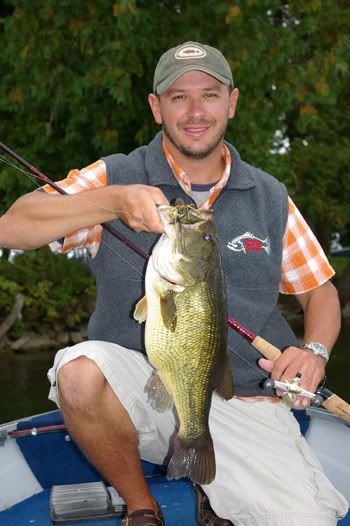
Although the fishing can be spectacular when the temperatures drop and the toques come out, don’t dismiss those warm days that routinely crop up in September and early October. Although still classed as fall time, some of my better days have been when the sun has shone and the shorts came out. You don’t get many days like that in the fall, but when you do, take full advantage of them. The largemouth seem to really turn on during those periods.
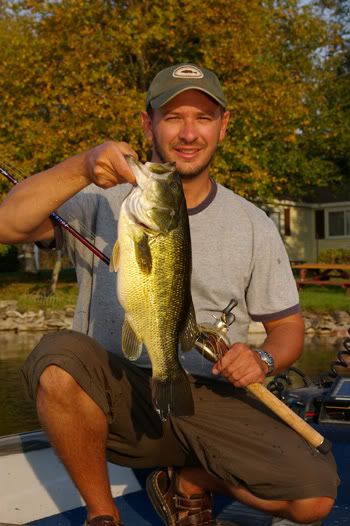
Sunny days will often find fish shallow – especially in chilly weather - while rough or stormy days see them drop a bit deeper. But, if it is a prime piece of property they are relating to, they will be up on it no matter what the weather is doing.
All Hail to the Flipping Jig
No other lure has accounted for more, or bigger largemouth bass come fall than the flipping jig. It is the bait I toss 95% of the time once the leaves change colour. A flipping jig replicates the size, shape, and movement of a crayfish perfectly, making it the best bait to use when working rock. It is also one of the easiest lures to manipulate.
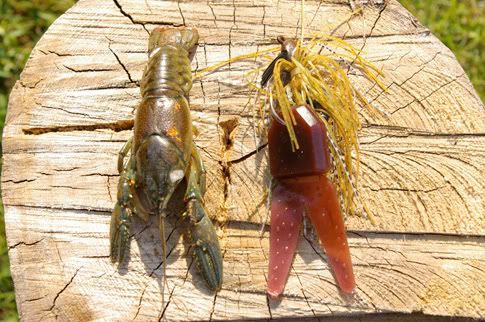
My favourite style of bait is a ½ ounce model. This will cover the majority of situations you’ll face. Deep water or rough and windy conditions will dictate the use of a heavier jig, at which point switching to a ¾ ounce bait is recommended. Maintaining bottom contact is key to fall fishing, so if you are losing feel with the structure, upsizing is in your best interest.
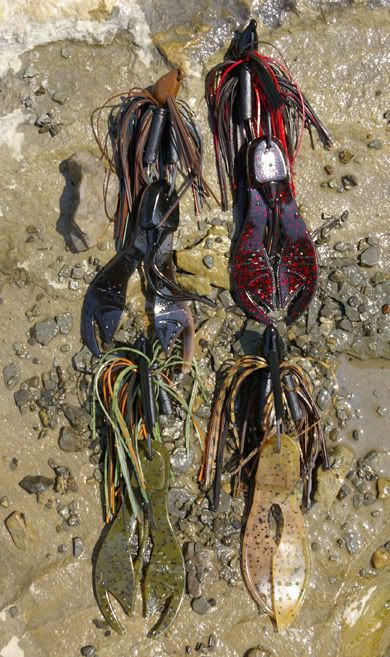
Matching the hatch is the name of the game when fishing rock, as duplicating a crayfish is the obvious goal. Brown, brown/orange, brown/black, and red/black are my top colour choices, although I have also had success with blue, black, and purple. Change colours throughout the day until you find one that works. Rattles are an integral part of the system, so make sure your jig is capable of making sound. This will help bass locate your offering, and ultimately lure them in. The use of a crayfish scent is also recommended.
Trailer material is a personal choice at this time of year, and many folk turn to pork once the water cools. I rely quite heavily on plastics, and have found craw chunks in the 3-½ inch size fit my needs perfect. I generally match colours when putting the ensemble together.
Although my “go-to†combination consists of a Booyah “Boo Jig†and Yum Chunk, other models made by Berkley, Strike King, Bass Pro Shops, and Zoom also fit the bill. My advice is to try a wide range of product until you settle with one you like best.
The technique I employ during the fall is quite simple. Twenty to thirty-foot casts or pitches are the norm, and unless targeting a specific structure point, accuracy is not a necessity. Allow the jig to fall completely to bottom. Reel up the slack, and proceed to slowly drag or hop the bait back to the boat, making sure to maintain contact with the structure you are fishing. (Largemouth act very much like walleye when on rock, and will stay within a foot of the bottom most of the time. Work your jig near the surface and the chances of getting bit are slim.)
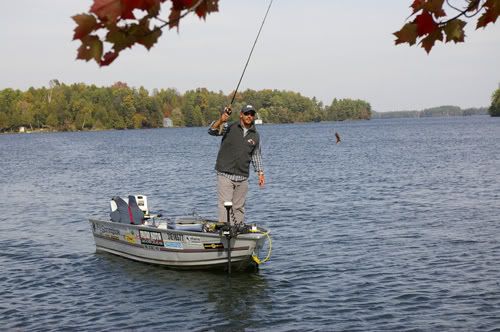
Fish will hit a jig in a number of different ways. If they are very aggressive, you will feel a definite “pop†on the end of your line. They may hit it with a “tap, tap, tap†sensation. My feeling is that they are trying to kill the crayfish when they attack it this way. (Smallies are renowned for hitting a jig this way.) The last way is for them to mouth the bait and slowly swim off. This is easy to distinguish, as you will feel a dead weight and your line will begin moving off to the side. Whichever the case, rearing back on the rod with all your might is mandatory.
Setting the hook more than once is also recommended.
Heavy flipping gear is the name of the game when working the rocks. I prefer a 7’6†heavy action rod. As for line, 20 or 25lb clear monofilament or fluorocarbon, matched up with a smooth and dependable baitcast reel works for me.
Deep-water bass, especially those that are above four-pounds, can pack a powerful punch, and light action gear just won’t cut it. These big boys will put a definite bend in the rod, as well as take line when the drag is set tight, so don’t shy away from the heavy gear. It’s definitely mandatory. I take a selection of Kistler flipping sticks out with me on every outing, and the inherent lightness, sensitivity, and strength these rods have, undoubtedly add to the number of fish I ultimately land.
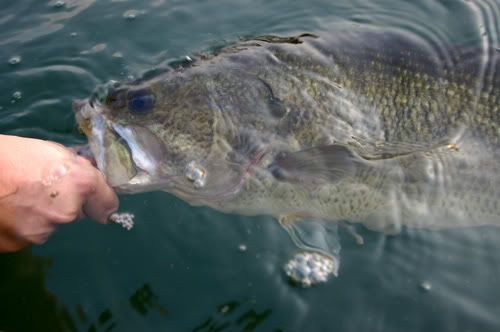
Fall time is one of splendour. The scenery is breathtaking and the bass run big, and for all of us trophy hunters, there is no better time of season to reap the phenomenal rewards. Thanksgiving indeed.






